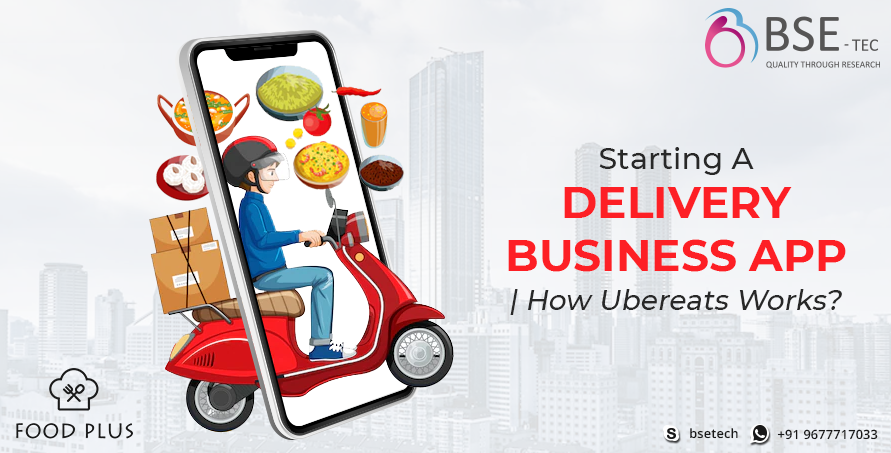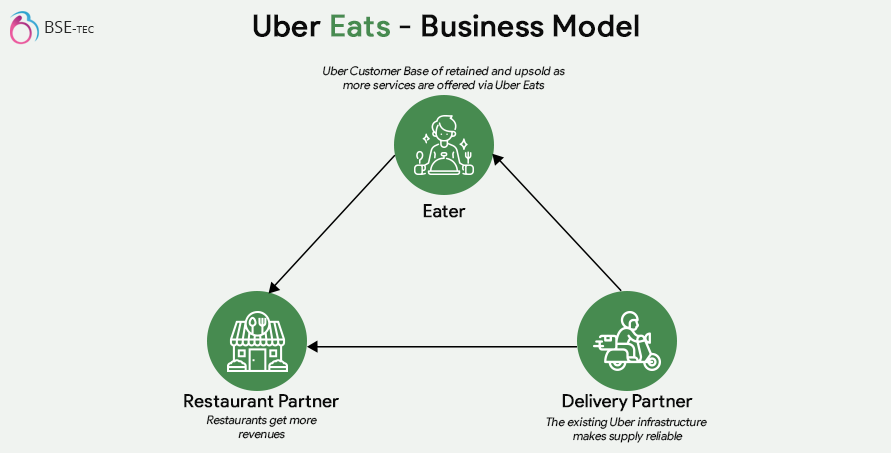Starting a Food Delivery Business App | How UberEats Works?

Uber eats is an online food ordering and delivery platform. Starting a food delivery platform like Doordash and Uber Eats is a promising business idea at this moment. Developing your own Uber Eats like app is an exciting venture. Uber Eats is one of the most popular food delivery apps and here is an overview of how it works.
- User Registration
Customers need to download the Uber Eats app from the app store. Create an account, and provide their contact details and delivery address. Usually the sign up process has hassle free logins with social logins or signing up by providing a phone number and validating it with OTPs.
- Restaurant Sign Up
Restaurants interested in partnering with the UberEats app need to register with the platform. To be listed on the app, restaurants have to meet certain eligibility criteria such as having the necessary permits and licenses like FSSAI and others.
- Menu and Pricing
Restaurants provide their menus, including item descriptions, images and prices, to the UberEats app. The given menu is available for customers to browse within the app.
- Placing an Order
Users can search the nearby restaurants or the app lists the restaurants nearby when GPS access is enabled. Users can place orders of their food from any of the listed restaurants, customize their orders with add-ons if preferred, select desired quantities, and make special requests regarding cutlery or dishes during checkout.
- Payment
Customers can link their payment methods (credit/debit cards, digital wallets, UPIs) to the app and payments are processed securely. Based on the service area payment methods may also include cash on delivery. Uber Eats retains a commission from each order, while the remaining amount is paid to the restaurant.
- Order Confirmation
Once the user pays for the order, the user gets order confirmation. The order confirmation includes order details, estimated time for delivery and the app starts displaying the real time status of the order.
- Order Preparation
The restaurant receives the order notification and starts preparing or packing the ordered food. Once done, they notify Uber Eats when the order is ready for pickup.
- Order Assignment
Uber Eats assigns the order to a nearby delivery partner (driver or courier) who is available and willing to accept the delivery. This is again updated to the customers with the details of the assigned dasher and his or her contact details.
- Order Pick Up
The assigned delivery partner receives the pickup details, including the restaurant’s address and order and delivery information. They proceed to the restaurant for pickup.
- Delivery
The dasher or the delivery partner picks up the order and leaves to deliver the food to the customer’s address. The customer can track the progress of their delivery through the app. With an integrated map, the users can track where the dasher is exactly at the moment.
- Ratings and Feedback
Once the delivery partner delivers the food order, the customer gets an option for leaving ratings and feedback for the delivery partner. This helps maintain service quality and provides valuable insights to both Uber Eats and the restaurant.
- Customer Support
With an in-app feature “Customer Support” , the users can submit any grievances in the food order or delivery issues. The readily available support team looks into the issues and fixes them.
Uber Eats – Business Model
Uber Eats is a three-sided marketplace (connecting the user, restaurant and the delivery partner).

Three- Sided Marketplace
With the advancement in tech, enterprises are moving towards Multi-sided marketplaces. For example, Amazon is a two-sided marketplace, since it is a consumer to consumer (C2C) marketplace, where consumers sell their products in amazon’s marketplace to consumers who are ready to buy them. Anything above the two-sided marketplace logistics is very daunting. But with the emerging technologies complex logistics like three-sided marketplaces are made possible. The three sided marketplace moves around three key players, in case of UberEats it is
- The Consumer – Pays Uber Eats for the delivery and surge charges.
- The Restaurant Owner – Pays UberEats commission fees.
- UberEats – Pays the delivery partners for their Food delivery.
Uber Eats value prepositions and its three sided business model has set up Uber Eats to dominate the food delivery market. Though it hasn’t crowned the monopoly among such online food ordering and delivery software, it has generated a revenue amounting to a whooping 11 billion US dollars in 2022. This is such a promising figure for those who are thinking of starting a food delivery business? Why wait? Get in touch with BSEtec for a free consultation on how to set up your food delivery business.
Did you find this article useful? Let us know by leaving a comment below, or join us on Twitter and Facebook.




